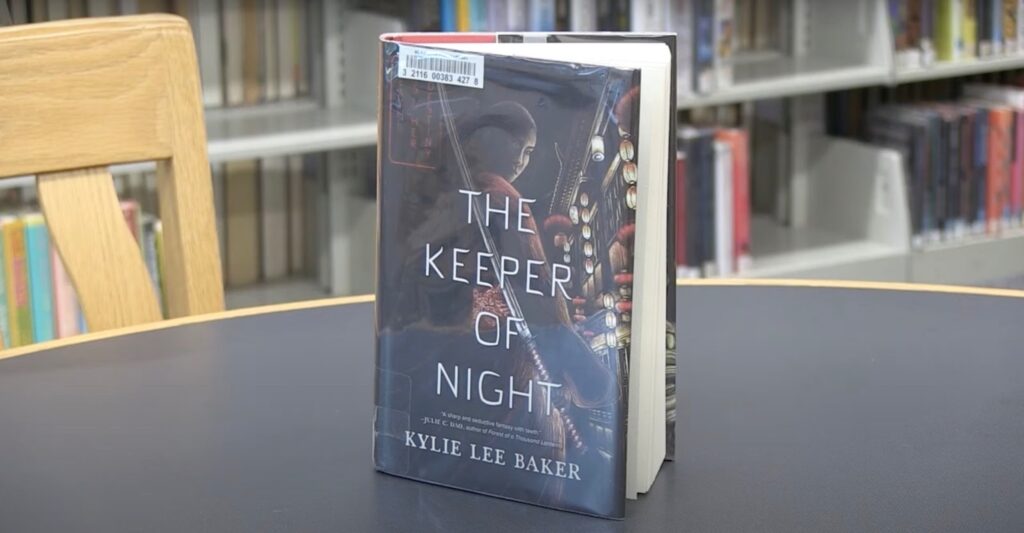Unveiling “The Keeper of Night”: A Deep Dive
Embracing the Shadowy Realms “The Keeper of Night” by Kylie Lee Baker is not just a book; it’s a passage into a world where the veil between life and death is at its thinnest. Set against the backdrop of 1890s Japan, Baker’s work invites readers into a realm that fuses historical accuracy with the tendrils of the supernatural. The narrative commences with an introduction to Reni, a biracial and bicultural protagonist struggling to find her place in the rigid hierarchies of the reaper society.
A Canvas of Darkness: Setting and Atmosphere
Kylie Lee Baker’s Japan is an intricate tapestry of eerie tranquility and tumultuous emotion. The settings—from the gloomy English streets to the ethereal Japanese landscapes—are rendered with such visceral detail that they envelop the reader in a world both achingly familiar and deeply otherworldly.
Key Settings in “The Keeper of Night”:
- London: A city of fog and shadows, where Reni’s journey begins;
- The Japanese Countryside: Pictured as both serene and sinister, home to spirits and secrets;
- The Underworld: A labyrinthine realm that juxtaposes beauty with horror.
Half British Reaper, Half Shinigami: Character Analysis
Reni, our protagonist, embodies the perpetual conflict between her British and Japanese heritage. The analysis of her character is a deep dive into her psyche, unraveling her fears, desires, and the ceaseless quest for acceptance. She navigates her reality with the burden of being seen as an anomaly, neither fully reaper nor fully shinigami, which Baker portrays with poignant clarity.
The Ties That Bind: Exploring Relationships
Relationships in “The Keeper of Night” are multifaceted, often defined by conflict and a yearning for connection. Reni’s bond with her brother, Neven, is a central pivot around which much of the emotional narrative revolves.
Key Relationships in Reni’s Life:
- Reni and Neven: A bond mired in complexity and rivalry;
- Reni and Hiro: Friendship that blossoms in the face of adversity;
- Reni and Her Heritage: The internal struggle with her dual identity.
Myth Meets Mortality: Themes of Life and Death
The novel delves into the duality of existence—life and death, using the rich tapestry of Japanese folklore to explore these omnipresent themes. Baker’s narrative questions and ponders the philosophy behind existence, with the Shinigami mythology serving as a poignant backdrop for this exploration.
Key Themes Addressed:
- The Struggle for Identity: How Reni’s dual heritage affects her existence;
- The Nature of Power: What it means to wield power over life and death;
- The Search for Belonging: The universal quest for a place to call home.

Whispers in the Shadows: Writing Style and Language
Baker’s prose is a melodic whisper that beckons readers into the shadows of her creation. Her language is a collection of whispers and roars, much like the realms of the living and the dead that she describes. There is a rhythm to her writing, an ebb and flow of sentences that range from succinct and sharp to languid and lyrical, showcasing a high degree of burstiness.
The Keeper of Myths: Incorporating Japanese Folklore
Baker’s use of Japanese folklore is not merely ornamental but forms the crux of the narrative. The myths act as both context and catalyst, driving the story forward and providing a rich historical and cultural backdrop that is both educational and entertaining.
Japanese Folklore Elements:
- Shinigami: Death spirits that guide souls to the afterlife;
- Yokai: A variety of supernatural creatures with unique traits;
- Kami: Divine spirits of the Shinto religion, some of which play roles in the story.
A Mosaic of Influence: Contrasting Pantheons of Fantasy
Diving into the literary landscape, “The Keeper of Night” stands shoulder to shoulder with contemporary giants of the young adult fantasy realm. Its luminescence comes not only from the storyline but from the rich, dark velvet of Baker’s prose. When juxtaposed with titans like Leigh Bardugo’s Grishaverse or Laini Taylor’s mythopoeic masterpieces, Baker’s novel illuminates its unique essence. Her use of the Shinigami lore crafts a distinctive narrative, a blend of the spectral and the mortal, setting it apart in a genre rife with common tropes. Baker’s novel does not merely sit at the round table of fantasy literature; it carves its own throne, establishing a sovereign territory of thematic depth and character complexity.
Comparative Litany of Fantastical Worlds:
- Epic Quests and Inner Journeys: Unlike the vast treks across fantastical lands common in YA fantasy, Baker’s story is as much an internal quest as it is a physical one;
- Duality of Worlds: While many fantasy novels offer a dichotomy of worlds, Baker presents a seamless integration of the ethereal and the historical;
- Tapestry of Myths: Baker’s integration of folklore feels less like a borrowed motif and more like an original symphony of myth and reality.
Unraveling the Night: A Critical Acclaim Reverb
“The Keeper of Night” reverberates through the corridors of literary critique with its bold, inventive storytelling. It’s not just the critics who whisper praise; readers themselves resonate deeply with Reni’s odyssey, reflecting the power of Baker’s narrative to mirror their own struggles with identity. The novel’s reception echoes in the hallowed halls of the young adult fantasy world, sending ripples that speak to its profound impact. It has not merely found a nook within the genre; it has illuminated it, challenging both readers and writers to look beyond the veil of the known, to embrace the rich complexity of cultural identity and the allure of the dark fantastic. Baker’s opus has not just been recognized; it has been celebrated as a new mythology, a fresh lexicon for the next generation of fantasy aficionados.

Transcending Realms: “The Seep” Meets “The Keeper of Night”
In a realm of literary introspection, it’s intriguing to compare “The Keeper of Night” with another notable work, “The Seep” by Chana Porter. While “The Keeper of Night” escorts us through the shadowed paths of death and identity in historical Japan, “The Seep” propels us into a speculative future where an alien entity brings profound change. Yet, despite their different settings and plots, both novels share thematic threads that interweave to form a rich tapestry of speculative fiction. They grapple with the concept of transformation and the fluidity of identity, and both Porter and Baker adeptly handle these themes within the frameworks of their unique worlds.
Intersecting Themes: A Comparative Glance:
- Identity and Transformation: Both novels ask “Who are we when everything changes?” In “The Keeper of Night,” Reni’s biracial heritage forces her into an identity crisis, while in “The Seep,” humans confront the changes brought by an alien invasion;
- The Nature of Belonging: Reni’s journey is mirrored in “The Seep” by the protagonist’s struggle with belonging in a world that has fundamentally changed;
- Dealing with Loss: “The Seep” explores loss through the lens of an alien utopia that eliminates pain, contrasting with Reni’s confrontation with the finality of death.
Parallel Narratives:
| Aspect | “The Keeper of Night” | “The Seep” |
|---|---|---|
| Setting | Historical 1890s Japan | Futuristic Utopia |
| Core Conflict | Personal identity and societal place | Resistance to or acceptance of transformative change |
| Supernatural Elements | Shinigami and Yokai | An alien entity that infuses all life |
| Narrative Style | Historical fantasy | Speculative fiction |
| Thematic Focus | Death, identity, and belonging | Change, identity, and the nature of happiness |
Conclusion
“The Keeper of Night” stands as a beacon in the dark fantasy genre, shedding light on the complexities of identity and culture. Kylie Lee Baker has crafted not just a story but an odyssey of the soul that resonates long after the final whisper of night has faded.
